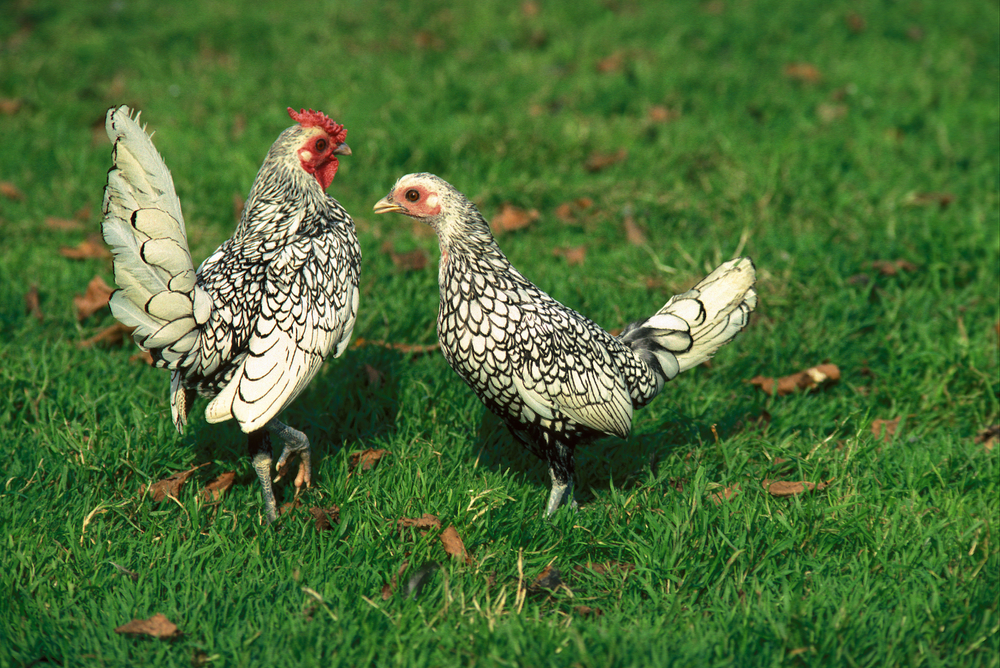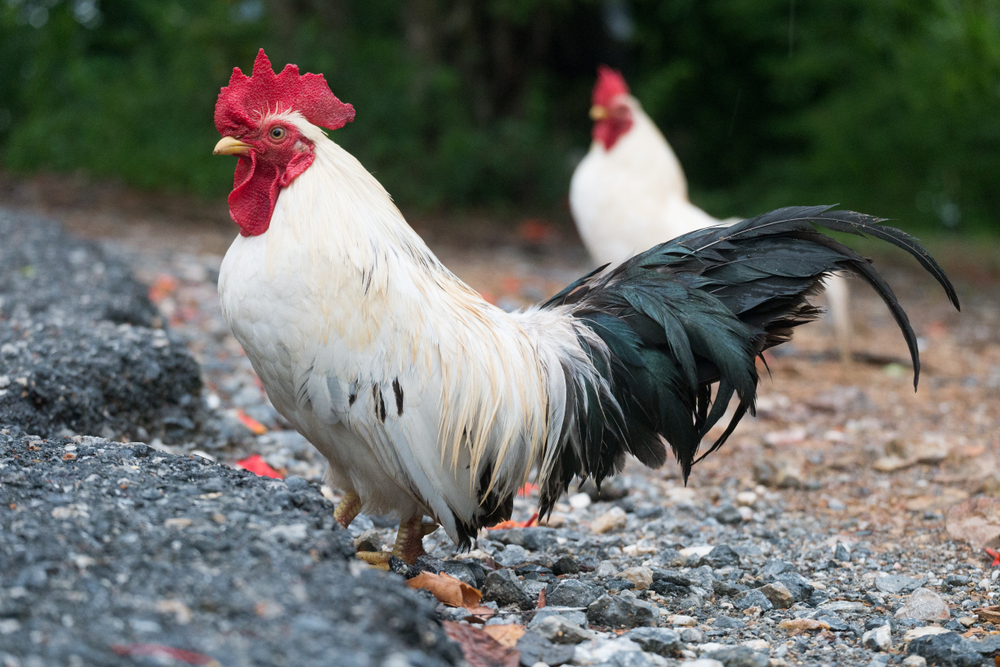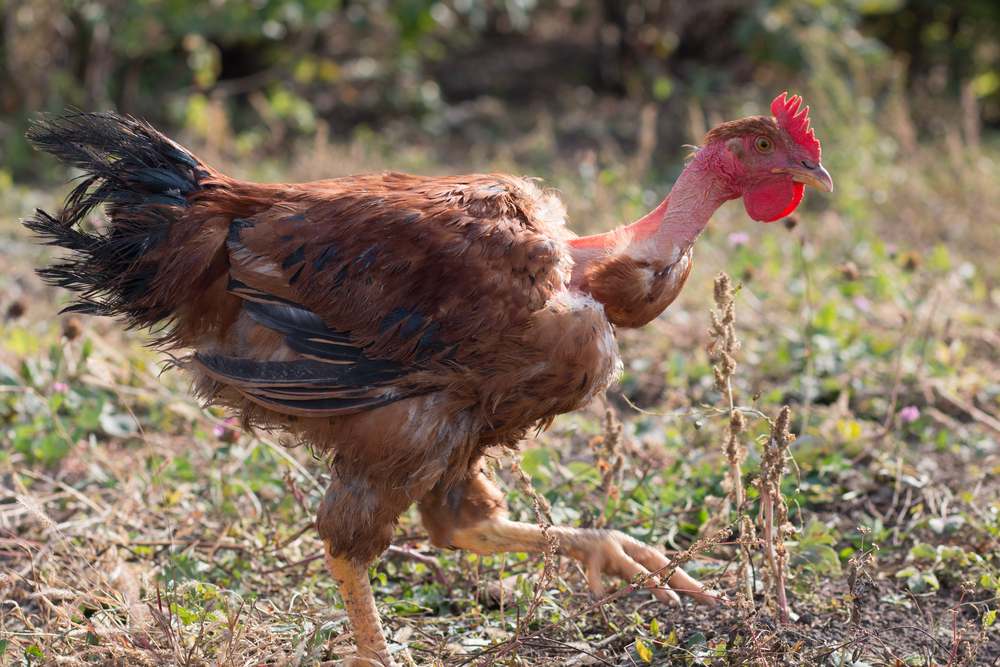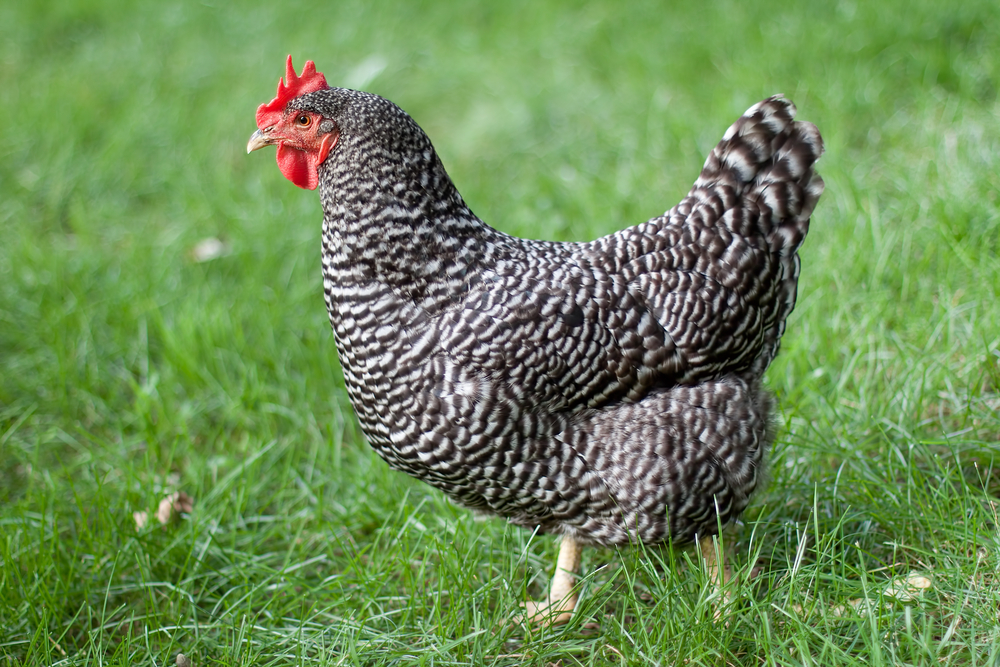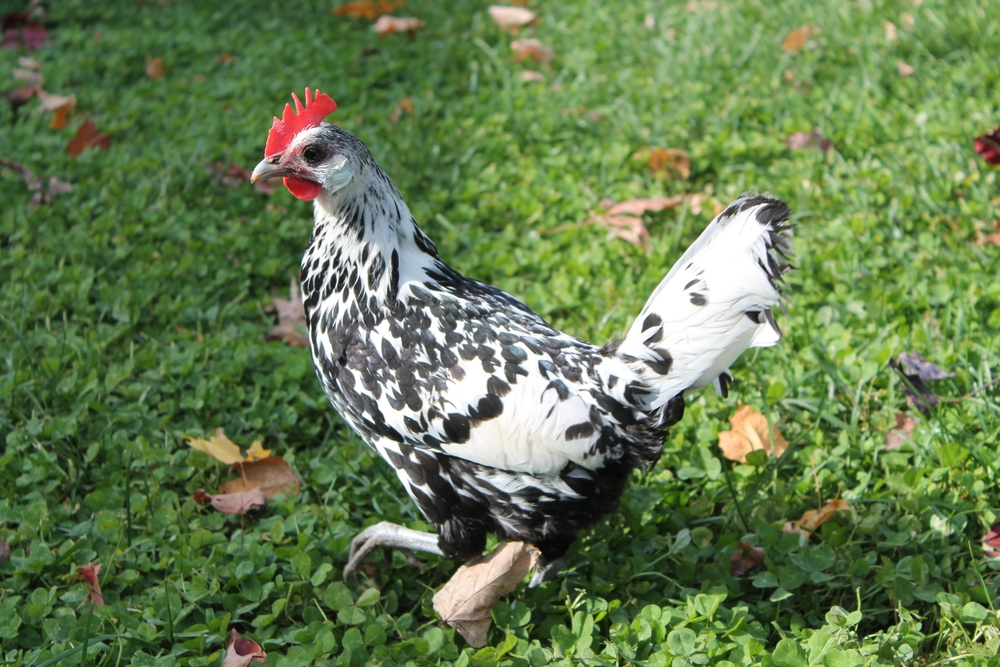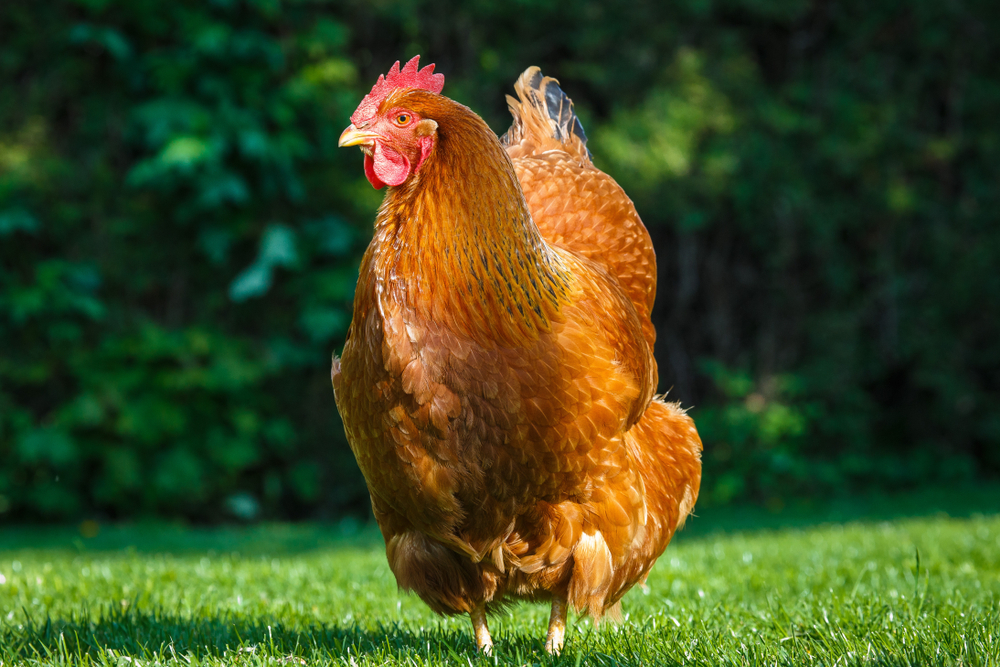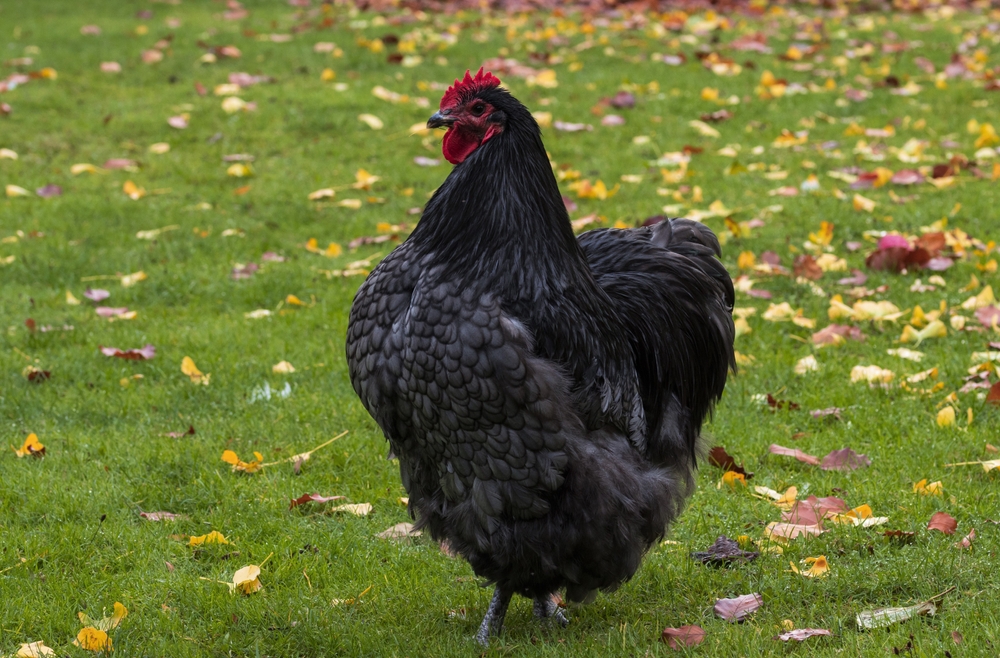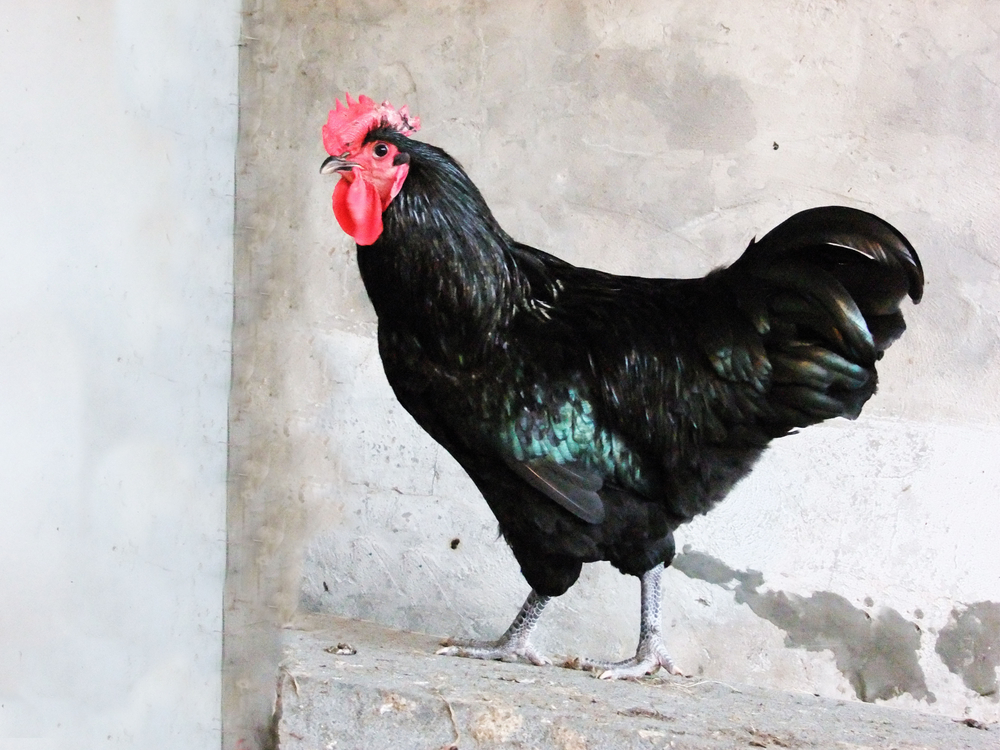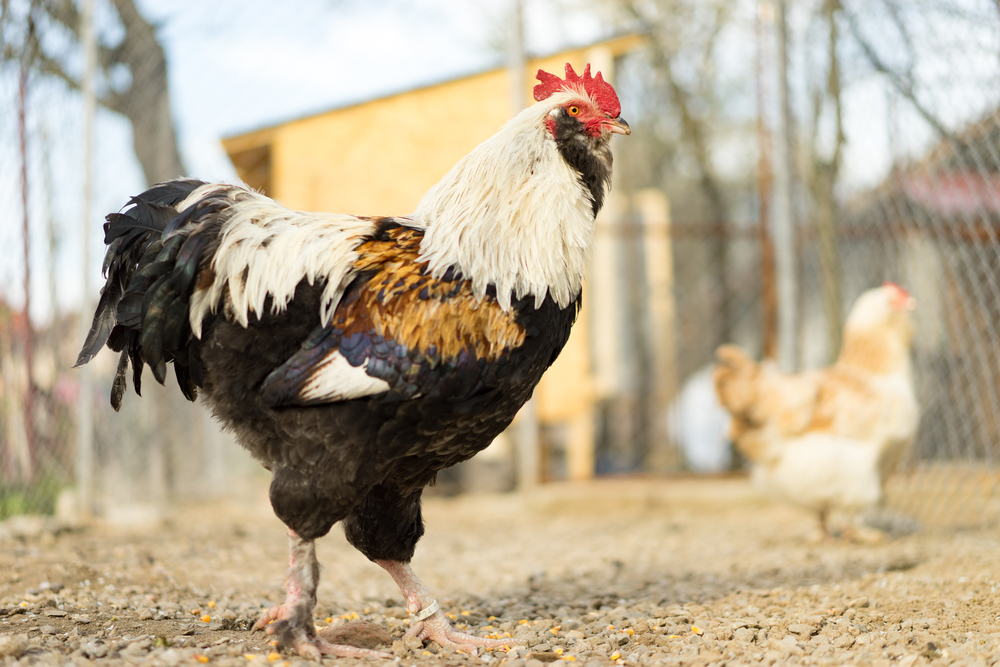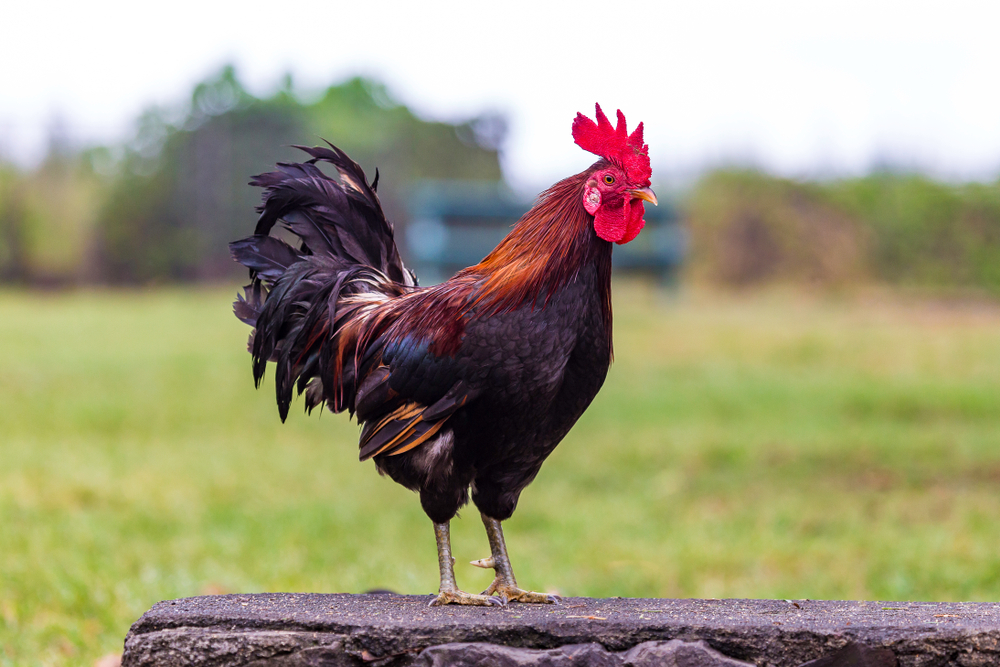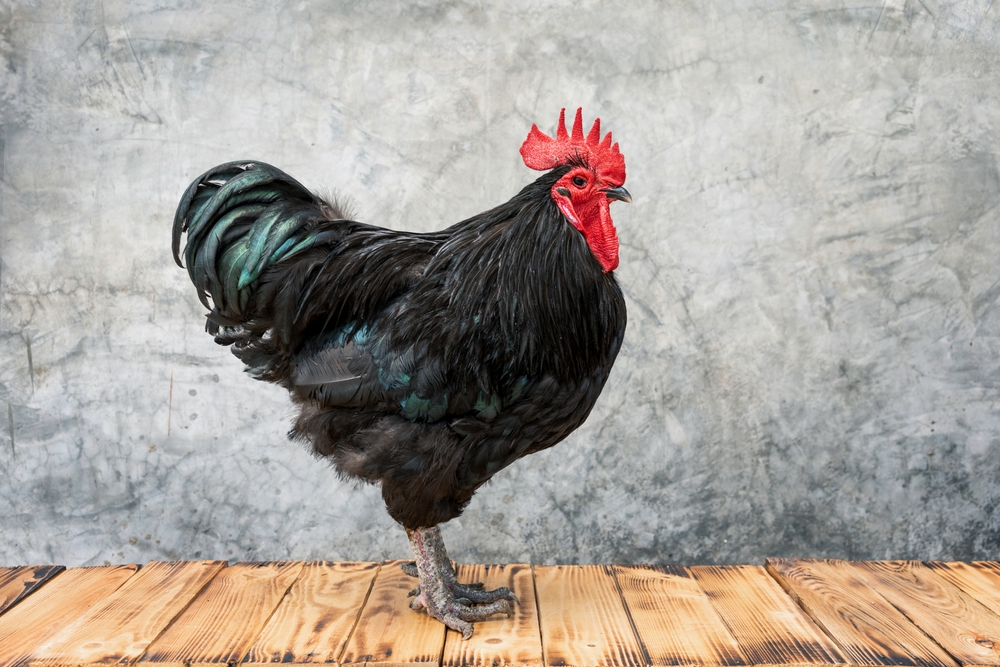The closest related breed to the Sebright is the Dutch Bantam, another true bantam of similar size and elegance. While Dutch Bantams share the small stature and exhibition purpose, Sebrights are unique in having hen-feathered males and intricate laced plumage, which Dutch Bantams do not.
About
The Sebright is one of the oldest and most celebrated true bantam chicken breeds—meaning it has no larger counterpart—developed in England in the early 19th century by Sir John Saunders Sebright. Bred solely for ornamental purposes, it is renowned for its exquisite feather pattern and compact elegance.
Sebrights are tiny, refined birds, with both roosters and hens weighing under 620 g (1.3 lbs). They are unique in having true hen-feathered males—roosters lack the pointed saddle and hackle feathers typical of male chickens, instead having rounded plumage like the hens. Their most famous varieties are gold-laced and silver-laced, each feather edged in a contrasting black line that creates a dramatic and precise outline.
They have a short, compact body, a prominent breast, a single upright comb, and slate-blue legs. Despite their delicate looks, Sebrights are active and hardy, though they do require dry, clean conditions to keep their intricate feathering in top condition.
Sebrights are not prolific layers, producing about 50–80 small white eggs per year. Their value lies in beauty, not productivity, and they are popular among poultry fanciers and exhibition breeders.
They are spirited and curious but can be somewhat flighty compared to heavier breeds. With their small size and active nature, they do best in secure enclosures or aviary-style runs.
The Sebright’s scientific classification is Gallus gallus domesticus, and it belongs to the family Phasianidae.
Physical Characteristics
Plumage:
Sebrights are renowned for their striking laced plumage, where each feather is edged with a contrasting color. Two recognized varieties exist: Gold-Laced (rich golden feathers edged in black) and Silver-Laced (silvery-white feathers edged in black). The feathers are tight, smooth, and lie close to the body, contributing to the breed’s refined, ornamental look.
Head and Comb:
The head is small and refined with a rose comb ending in a fine, distinct spike. Comb, wattles, and earlobes are bright red, while the beak is short, well-curved, and horn to dark slate in color. Eyes are large, round, and reddish bay, adding to their alert expression.
Body:
The Sebright has a compact, short-backed body with a prominent breast and upright carriage. The wings are large in proportion to body size and are carried low, almost touching the ground, giving the breed its characteristic “game bird” stance.
Legs and Feet:
The legs are clean (feather-free), fine-boned, and slate-blue in color, with four well-spaced toes. Despite their delicate build, they are active and agile movers.
Tail:
The tail is well-developed, carried high, and fanned out in both males and females. Unlike most breeds, Sebright males are hen-feathered, meaning they lack the long, pointed saddle and sickle feathers typical of roosters, giving both sexes a similar overall outline.
Size:
-
Male Weight: 22 oz (625 g)
-
Female Weight: 20 oz (570 g)
The Sebright is strictly a true bantam—it has no larger standard counterpart.
Sexual Dimorphism:
Minimal compared to most chicken breeds due to hen feathering in males. Males are only slightly larger and have slightly more vivid coloration, but lack the pointed feathers and flowing tails typical of roosters.
The Sebright’s intricate lacing, compact true bantam size, and hen-feathered males make it one of the most distinctive and ornamental chicken breeds in the world.
Reproduction
Mating Behavior:
Sebrights are lively and active, with roosters showing confident but generally non-aggressive courtship behaviors. Due to their small size, they can be kept in tighter breeding trios or quads, though a standard ratio of 1 rooster for every 5–6 hens helps ensure fertility. The hen feathering in roosters does not affect mating ability.
Breeding Season:
They can breed year-round in mild climates, but fertility peaks in spring and early summer. In cooler climates, they breed best during warmer months, as chicks require protection from cold early in life.
Egg Laying:
Sebrights are light layers compared to utility breeds, as they were developed for exhibition.
-
Annual Output: Around 50 to 80 small eggs per year.
-
Egg Color: Tinted to pale cream.
-
Egg Size: Small.
Broodiness and Incubation:
-
Sebright hens are rarely broody and often uninterested in sitting on eggs, making artificial incubation or fostering under broody hens of other breeds common in breeding programs.
-
Incubation Period: About 21 days.
-
Due to their small egg size, chicks are delicate and require careful brooding conditions.
Chicks:
-
Appearance at Hatch: Small, fluffy, and patterned according to their eventual plumage variety.
-
Self-Sufficiency: Active and curious but need warmth and protection due to small body mass.
-
Growth Rate: Moderate; they feather out quickly but remain small in size.
Maturity:
Sebright pullets typically begin laying at around 6 to 7 months, and roosters reach breeding maturity at a similar age.
Sebrights’ low egg production, limited broodiness, and delicate chicks make them more of a breeder’s or exhibitor’s bird than a production choice, but their unique genetics and beauty make careful reproduction worthwhile.
Lifespan
Lifespan in the Farm/Backyard Setting:
Sebrights are generally hardy for their size but, being small ornamental birds, they typically live 5 to 7 years in well-managed flocks. Peak breeding and exhibition quality occur in the first 2 to 4 years.
Lifespan in Optimal Conditions:
With excellent nutrition, predator protection, and attentive care, Sebrights can live longer than average for bantams.
-
Average Maximum Lifespan: 7 to 9 years
-
Exceptional cases: 10 years or more, especially when kept as pets or show birds rather than in active breeding programs.
Threats to Longevity:
-
Predation: Due to their small size, they are more vulnerable to hawks, owls, foxes, and even cats.
-
Climate Sensitivity: Less tolerant of prolonged cold or damp conditions compared to larger breeds.
-
Parasites and Disease: Prone to external parasites such as mites and lice; respiratory illnesses can spread quickly in small, ornamental flocks.
-
Genetic Challenges: As a pure ornamental breed with a small genetic pool, some lines may be more susceptible to health issues.
Adaptations for Longevity:
Sebrights are active, alert, and quick-moving, which helps them avoid some predators. Their tight feathering and small body size allow them to thrive in warm climates when shade and water are available.
Eating Habits
Diet:
Sebrights are omnivorous foragers that thrive on a combination of commercial poultry feed and natural food sources.
-
Primary Feed: High-quality bantam or layer pellets/mash with 16–18% protein, with smaller pellet size preferred for ease of eating.
-
Foraged Foods: Small insects, ants, worms, seeds, and tender greens found while roaming.
-
Treats and Supplements: Millet, cracked corn, vegetable trimmings, grit for digestion, and oyster shell for calcium (especially for laying hens).
Feeding Behavior:
-
Sebrights are active and agile feeders, often foraging over a wide area despite their small size.
-
They eat less feed overall compared to standard breeds but require nutrient-dense rations to maintain health and feather quality.
-
Roosters frequently tidbit to attract hens to food sources.
Foraging Times:
-
Most active during morning and late afternoon, resting or dust-bathing during the warmest hours of the day.
-
In hot climates, they may forage in shaded areas throughout the day.
Adaptations for Feeding:
-
Short, fine beaks well-suited for picking small seeds and insects.
-
Light body weight allows them to be quick and nimble when chasing bugs or scratching for food.
Captive Diet Management:
-
Balanced feed is essential, as their small size means nutritional deficiencies can develop quickly if diets are poor.
-
Overfeeding high-fat treats can lead to obesity, which reduces breeding and show condition.
Sebrights’ efficient foraging skills, small appetite, and need for high-quality nutrition make them low-cost to feed but dependent on attentive diet management for optimal health.
Uniqueness
True Bantam Status:
Sebrights are a true bantam breed, meaning they have no larger counterpart. They were developed in the early 1800s in England specifically for ornamental purposes, not for utility.
Hen-Feathered Males:
One of only a few chicken breeds where roosters are hen-feathered, lacking the long, pointed saddle and sickle feathers typical of males. This gives both sexes a nearly identical outline.
Intricate Laced Plumage:
Each feather is perfectly edged in contrasting color, creating the gold-laced or silver-laced pattern for which the breed is famous. This fine lacing is highly prized in poultry exhibitions and is difficult to breed to perfection.
Active and Elegant Carriage:
Despite their small size, Sebrights have a confident, upright stance and low-hanging wings that almost touch the ground, giving them a game-bird-like elegance.
Show and Exhibition Focus:
Bred purely for beauty, Sebrights have been a staple of poultry shows for over two centuries. They are valued for their refinement, symmetry, and flawless feather patterns.
Historical Significance:
Created by Sir John Saunders Sebright in England, the breed is one of the oldest recorded bantams developed deliberately through selective breeding, making it a landmark in poultry history.
The Sebright’s true bantam heritage, hen-feathered roosters, and world-famous laced plumage make it one of the most visually striking and historically important ornamental chicken breeds.
Be the First to Share Photos of This Species.
FAQ’s
1. What is the closest species to the Sebright?
2. How does the Sebright compare to other chickens?
The Sebright differs from most chicken breeds in several ways:
-
True Bantam Status: Unlike bantam versions of larger breeds, Sebrights have no standard-sized counterpart.
-
Hen-Feathered Males: Roosters lack the pointed feathers typical of male chickens, making both sexes look alike.
-
Plumage: Intricate, precise lacing on every feather, highly valued in shows.
-
Purpose: Kept almost exclusively for ornamental and exhibition purposes, not for meat or egg production.
-
Size: One of the smallest recognized chicken breeds in the world.
3. What national parks provide the best chances to see a Sebright?
As an ornamental poultry breed, Sebrights are not found in the wild. However, they can be seen in heritage farms, agricultural exhibitions, and poultry shows, including:
-
Weald & Downland Living Museum (West Sussex, UK)
-
Beamish Open Air Museum (County Durham, UK)
-
Old Sturbridge Village (Massachusetts, USA)
-
Colonial Williamsburg Rare Breeds Program (Virginia, USA)
-
Sovereign Hill (Victoria, Australia)
These locations often keep Sebrights as part of rare breed conservation and educational displays.



































































